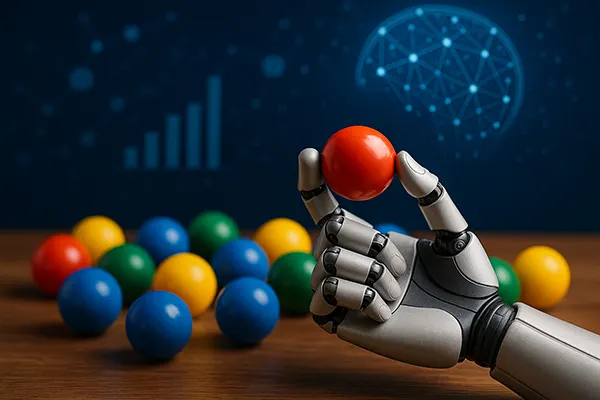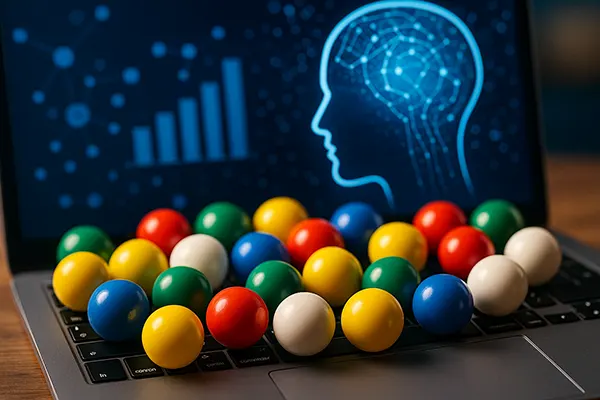
Artificial Intelligence in Lottery Prediction: How Algorithms Analyse Numbers
For decades, people have sought to predict lottery outcomes, combining statistics, psychology, and sheer luck. In 2025, artificial intelligence (AI) has taken this pursuit to a new level. Modern algorithms can analyse vast datasets of past draws, identify statistical anomalies, and estimate probabilities with precision unimaginable just a few years ago. Although no system can guarantee a win, AI helps researchers and enthusiasts better understand how randomness works and where patterns may emerge.
How AI Processes Historical Lottery Data
Artificial intelligence models rely on machine learning to detect patterns in lottery data. They process thousands of previous draws, identifying recurring sequences, hot and cold numbers, and potential correlations that human analysts could easily overlook. Neural networks are particularly efficient in identifying relationships between data points that traditional statistical models might dismiss as noise.
Data preprocessing plays a crucial role here. AI systems must clean and normalise the input data to eliminate duplicates, missing records, or biased entries. Once trained, the models can simulate millions of draw scenarios, assigning probabilities to certain combinations. This doesn’t produce “predictions” in the mystical sense but provides mathematical insights into number distribution and frequency trends.
Advanced algorithms also use techniques such as clustering and regression analysis. These methods help visualise how number groups behave over time. By comparing data from various lotteries, AI can highlight universal statistical behaviours or unique tendencies specific to certain national draws.
Real-World Applications and Limitations
Several research teams and private developers have implemented AI-powered lottery analysis tools. These systems offer detailed visualisations of number frequencies, helping users identify trends or test their hypotheses. For example, predictive analytics software can generate probability maps showing which combinations have appeared most often over a set period.
However, it’s crucial to remember that lotteries are based on randomness. Even the most advanced AI cannot foresee future results because each draw is independent. AI’s role is analytical, not predictive—it improves understanding rather than guaranteeing success. The fascination lies in exploring how statistical chaos can still reveal subtle order when processed through deep-learning systems.
Ethical concerns also arise. Using AI to simulate potential outcomes might encourage risky behaviour among players who mistake probability for certainty. Responsible use of such technology means recognising its limits and avoiding the illusion of control over chance-based games.
Algorithms and Predictive Modelling Techniques
Modern AI systems use a mix of supervised and unsupervised learning methods to handle lottery datasets. Supervised learning trains models using labelled data—historical results with known outcomes—while unsupervised learning lets algorithms find patterns on their own. Both approaches offer unique benefits, depending on the analysis goals.
Deep neural networks (DNNs) and recurrent neural networks (RNNs) are often employed to handle sequential data like lottery draws. RNNs, in particular, excel at recognising temporal dependencies—patterns evolving over time. Even if no true predictability exists, AI can detect cyclical behaviours or seasonal effects that humans might miss.
Reinforcement learning represents another interesting direction. In this setup, the algorithm “learns” through trial and error, optimising its strategy for predicting probable outcomes. Though applied mainly in finance and gaming simulations, reinforcement learning offers promising insights into probability modelling for lotteries.
The Role of Data Transparency and Fairness
For AI analysis to be reliable, data transparency is vital. Open databases of lottery results allow researchers to train models on verifiable and diverse datasets. This reduces bias and improves reproducibility—two key principles in scientific research. Governments and lottery operators increasingly publish anonymised datasets, promoting responsible research and public understanding of randomness.
Moreover, fairness in AI design ensures that no manipulation occurs. Since lotteries are tightly regulated, it’s essential to guarantee that any AI analysis remains purely academic or entertainment-focused. Ethical guidelines and data governance frameworks now exist to prevent misuse or misrepresentation of AI capabilities.
Transparency also enhances public trust. When players know that AI tools only interpret data rather than influencing outcomes, the discussion about probability and randomness becomes more educational and less speculative.

Future of AI in Lottery Research
By 2025, artificial intelligence continues to evolve rapidly, integrating new forms of data analytics, including quantum computing models. These advanced methods could simulate randomness more accurately, helping scientists explore probability theory and entropy in unprecedented detail. The future of lottery research lies not in predicting winning numbers but in expanding human understanding of complex systems.
AI-driven simulations already assist universities in teaching probability and statistics. Interactive dashboards allow students and researchers to test hypotheses about random distribution, variance, and deviation. Such applications demonstrate how gaming data can become a valuable educational tool when used responsibly.
Looking ahead, collaboration between data scientists, mathematicians, and regulatory bodies will shape how AI contributes to lottery-related studies. By maintaining transparency, scientific accuracy, and ethical integrity, artificial intelligence will continue to serve as a bridge between mathematical theory and the real-world fascination with chance.
Balancing Curiosity and Responsibility
While the excitement around AI in lottery prediction is undeniable, it’s essential to balance curiosity with responsibility. The core idea behind using AI isn’t to defeat randomness but to comprehend it better. Analysing probability through machine learning deepens our grasp of statistics and cognitive bias—why people perceive patterns even in random events.
Responsible communication is key. Developers and researchers must ensure users understand the educational value of such tools. Presenting AI-based analysis as insight, not prediction, helps maintain realistic expectations among enthusiasts.
Ultimately, artificial intelligence doesn’t undermine the randomness of lotteries; it celebrates the intersection of mathematics, psychology, and technology. The journey towards understanding randomness is, in itself, a form of intellectual discovery.
